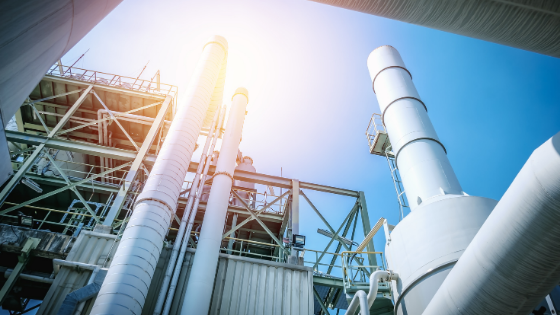
What Are The Advantages of Condition Based Monitoring?
Industrial plants need their assets to function properly and have a long lifespan to ensure they’re keeping costs low, and production rates high. Condition-based monitoring (CBM) is a maintenance strategy that monitors the current condition of an asset and uses data to decide what maintenance needs to be done to ensure peak asset health.
While the asset and its functionality are the “beating heart” of any plant, maintenance and monitoring actions such as CBM are important for ensuring longevity and quality in production.
What Is Condition-based Monitoring Used For?
The goal of CBM is to monitor assets and pinpoint upcoming equipment failures and maintenance needs. CBM allows for necessary inspections and repairs to be proactively scheduled when it is needed.
When performing CBM, maintenance actions should be taken only when certain indicators show signs of performance issues such as gear defects, recurring maintenance is needed such as lubrication, or upcoming failure is expected.
CBM professionals know when to schedule maintenance because asset conditions trigger alerts at an interval where there is plenty of time before failure. As the low gas level indicator light in your car informs you when it’s getting close to empty (failure), so do the various asset indicators alert monitors that work needs finished before the asset fails or performance levels fall under the optimal stage.
Planned Maintenance Vs Condition-based Monitoring Vs Predictive Maintenance
Regular maintenance intervals for your car, such as oil changes and tire rotations are similar forms of planned maintenance (PM), that are performed at predefined scheduled intervals.
Unlike PM, condition-based maintenance is performed only after an asset’s condition or equipment has decreased in performance and is alerted to monitors. Preventive maintenance is on a set schedule, and the time between repairs is often short. CBM has a longer period between maintenance repairs because it is only performed on an as-needed basis.
Predictive maintenance is a fairly new term that many industry professionals might confuse with condition-based monitoring. 79% of businesses see predictive maintenance as the main application of industrial data analytics. The main difference between predictive maintenance and CBM is the timing at which the maintenance takes place.
While the goal of both strategies is to monitor the health and condition of an asset CBM focuses on the real-time condition, while predictive maintenance focuses on the very early detection of defects or failures. Predictive maintenance can be 60 or 90 days ahead of CBM alerts.
The implementation of all these maintenance strategies for today’s industrial plants is significant for keeping a high return on investment (ROI) for the asset.
The Advantages of CBM
The reason for CBM is clear - to ensure that an asset remains in optimal health and to increase the lifespan. But CBM also provides other advantages to maintenance plans, professionals and industrial plants as a whole by monitoring assets and equipment parameters in real-time.
With this process, plant monitor professionals do not have to wait until the machine fails or the motor breaks, which can lead to a lengthy downtime and disrupt production. Instead, the required maintenance work is scheduled with ample time before asset failure at a defined, measured point in time.
Other key advantages of condition-based monitoring include:
- Minimized probability of disruption to normal operations
- Minimized the cost of asset failures
- Improved asset and equipment reliability
- Reduced unscheduled downtime due to catastrophic failure (and can even eliminate downtime as a whole)
- Reduced time spent on maintenance
- Reduced overtime costs by scheduling the repairs
- Reduced need for emergency spare parts
- Optimized maintenance intervals
- Improved safety for workers
- Minimizes collateral damage to the asset/system
CBM processes are crucial for a plant's function and improvement. With different systems, there are various types of CBM actions that can be applied to ensure optimal monitoring and maintenance.
Types of Condition-Based Monitoring
The analysis of CBM for asset health can be non-invasive, meaning they don’t have to “go under the hood” so to speak. Some of these measurements include performance data, visual inspection and scheduled test results.
This condition data can be collected at specific intervals, or continuously such as when a machine has internal sensors. Condition-based maintenance can be applied to mission-critical and non-mission-critical assets including pumps, fans, compressors, mixers, agitators and conveyors.
Under 10% of industrial equipment wears out or fails. With CBM processes in place, failures and total losses are completely avoidable. CBM uses sensor devices to collect real-time data and measurements of an asset such as vibration, pressure, temperature. This data allows maintenance personnel to perform the required work at the precise moment it is needed, avoiding asset failure.
For example, noise is a condition that is monitored regularly. If a system measures the amount of noise produced by a motor, an increase in the noise level signals to workers that the motor needs to be repaired or replaced quickly. With a condition-based maintenance system in place, maintenance personnel will know exactly when to create the work order because of this noise measurement.
There are various types of condition-based monitoring techniques. Here are a few common examples:
- Vibration analysis: Compressors, pumps and motors are types of rotating equipment that vibrate. As equipment degrades or falls out of alignment, the vibration level increases. Vibration sensors can be used to detect when this becomes immoderate.
- Infrared: Infrared (IR) cameras can be used to read the temperatures of energized equipment. High-temperature levels can indicate that a machine is overheating, overcompensating, or settings are imbalanced.
- Ultrasonic: This special imaging can detect defects that may be too deep for standard visual inspection, such as boat hull corrosion.
- Acoustic: These readings allow CBM professionals to detect gas, liquid, or vacuum leaks
- Oil analysis: Assets need to stay lubricated to avoid wear. This analysis reads the number and size of particles in a sample to determine asset wear.
- Electrical: Monitors motor current readings
- Operational performance: Other system sensors that measure pressure, temperature, flow, etc.
If an asset begins to perform poorly or sets off a sensor, there are a variety of causes that can be linked to it. That’s why highly-trained CBM professionals must stay up-to-date with the latest equipment knowledge, and increase their mastery of CBM.
What is the Condition-based Maintenance Process?
For condition-based maintenance to be successful, there are several elements of your maintenance process that need to be in place. Your plant may include additional measures but the very basic outline should follow something like this:
- Establish a conditional baseline
- Install sensors for CBM
- Collect condition data
- Identify baseline breaches
- Create the work order for inspection/fixes
- Perform the maintenance
- Repeat the process from identifying baseline breaches
In addition to these steps, a scheduled maintenance strategy should also be implemented. This will allow a worker to inspect and identify abnormalities in equipment, and initiate prompt follow-up work orders as well.
Maintenance professionals can also take this process a step further by predicting which work orders will need new parts ordered, or lead to asset failure. Many times this is where advanced experience comes into play. Rather than waiting for first-hand experience, MOBIUSCONNECT is connecting industrial plant professionals in the CBM field, allowing them to master their craft faster and easier.
What to Take Away About Condition-Based Monitoring
Condition-based monitoring is a minimally disruptive form of maintenance when performed correctly. Assets and their complex mechanisms can develop a variety of issues that affect their performance. CBM allows plants to reduce overhead costs, minimize safety risks to workers, and lessen downtime due to unexpected failures.
However, CBM strategies require in-depth expertise to analyze the condition data and information from sensors and analysis tools.
Expand Your Knowledge About Condition-Based Monitoring with MOBIUS CONNECT
Condition monitoring is a rewarding yet challenging profession that often gets easier with experience. The purpose behind MOBIUS CONNECT®, the social media platform developed by Mobius Institute, is to provide condition monitoring professionals like you, as well as other plant experts with the ability to access resources for learning and sharing in your career.
Our goal is to bring you new, engaging, and educational information in an easy-to-access place where you can customize the content that you see based on your interests. Instead of scouring the internet for blogs or scrolling through a forum with content that you may not have an interest in, you can access your MOBIUS CONNECT account on your desktop or mobile device that is catered to your specific craft.
MOBIUS CONNECT is a community for industrial plant professionals, condition monitoring practitioners, reliability improvement experts, and much more. Within your account, you’ll find articles, videos, tips, webinars, and interviews to increase your education and help you along in your career journey. You can also see what others are discussing in topic forums.
MOBIUS CONNECT uploads content, news, and information daily in multimedia formats. Whether you have a few minutes or a few hours, we promise you’ll find something to improve your profession. Download the MOBIUS CONNECT app from the Google Play Store or the Apple Store and use your email to sign up for your account. Access a world of knowledge today with MOBIUS CONNECT.
